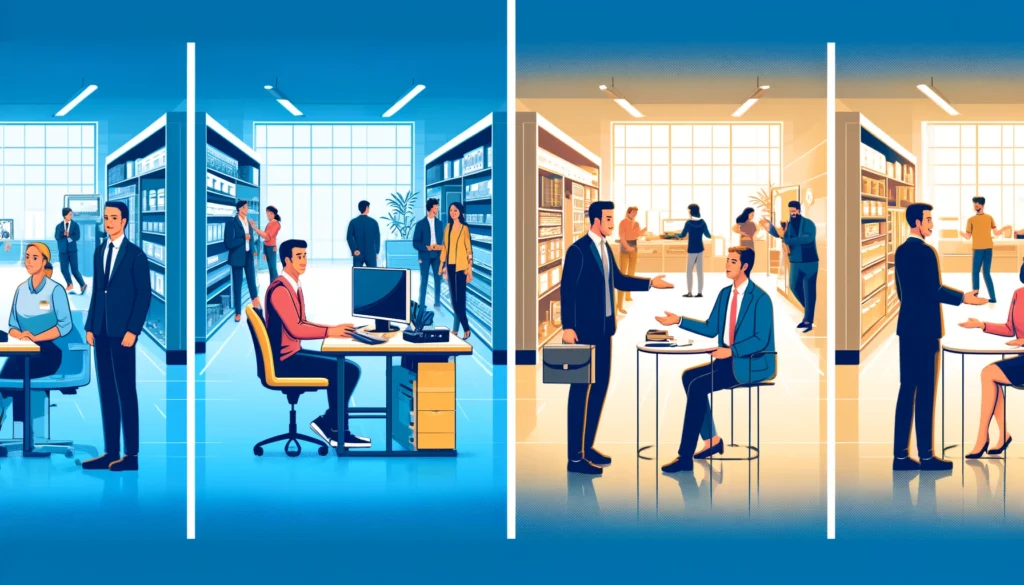Talent Management of a Multigenerational Workforce

Understanding Multigenerational Workforce
In today’s modern workplace, it is common to have a diverse workforce composed of individuals from different generations. These generations typically include Gen X, Gen Y (also known as Millennials), and Gen Z. Each generation brings with them unique characteristics and experiences that can greatly contribute to the success of an organization. However, managing a multigenerational workforce can also pose its own set of challenges.
One of the key challenges in managing a multigenerational workforce is understanding and bridging the communication gap between different generations. Each generation has its own preferred communication style, influenced by the technology and social norms of their time. For example, Gen X employees may prefer face-to-face communication or phone calls, while Millennials and Gen Z employees may feel more comfortable with digital communication platforms like email, instant messaging, or video conferencing.
Another challenge is the differing work styles and expectations of different generations. Gen X employees, for instance, may value stability, work-life balance, and job security. On the other hand, Millennials and Gen Z employees tend to prioritize flexibility, personal growth, and purpose-driven work. Understanding and accommodating these varying work styles can help create a positive work environment that caters to the needs of all employees.
Moreover, managing a multigenerational workforce requires effective leadership and management strategies that can motivate and engage employees from different generations. Traditional top-down management approaches may not be as effective with younger generations who value autonomy and collaboration. Leaders need to adapt their leadership styles to foster an inclusive and empowering work culture that encourages innovation and creativity.
Furthermore, organizations must recognize the importance of diversity and inclusion in their workforce. Embracing a multigenerational workforce not only brings together a variety of skills and perspectives but also enhances creativity and problem-solving abilities. By valuing and leveraging the strengths of each generation, organizations can create a dynamic and high-performing team that thrives in today’s rapidly changing business landscape.
In conclusion, managing a multigenerational workforce requires understanding and embracing the unique characteristics and experiences that each generation brings. By bridging the communication gap, accommodating different work styles, adopting effective leadership strategies, and valuing diversity and inclusion, organizations can create a harmonious and productive work environment that harnesses the full potential of a multigenerational workforce.
Characteristics of Different Generations
Gen X: Gen X refers to individuals born between the years 1965 and 1980. They are often characterized as independent, self-reliant, and adaptable. Having grown up during a time of rapid technological advancements, Gen X employees are generally comfortable with technology and can easily adapt to new tools and systems. This generation witnessed the birth of personal computers and the internet, and they have embraced these technological advancements in both their personal and professional lives. They have witnessed the transformation of the workplace from typewriters to laptops, from fax machines to emails. Gen X employees have learned to navigate through these changes and have become proficient in using various software and digital tools.
Gen Y (Millennials): Gen Y, or Millennials, were born between the years 1981 and 1996. This generation is known for their tech-savviness, entrepreneurial mindset, and desire for work-life balance. Millennials value flexibility in the workplace and seek opportunities for growth and development. They have grown up in a world where technology has become an integral part of daily life. From smartphones to social media platforms, Millennials have seamlessly integrated technology into their personal and professional lives. They are constantly connected and rely on technology to communicate, collaborate, and stay informed. This generation is also known for their entrepreneurial spirit, with many Millennials starting their own businesses or seeking job opportunities that allow them to have a greater sense of autonomy and control over their work.
Gen Z: Gen Z refers to individuals born after 1997. As the first true digital natives, Gen Z employees are highly comfortable with technology and social media. They are known for their strong multitasking skills, creativity, and desire for meaningful work. Gen Z has grown up in a world where smartphones and social media platforms are the norm. They are constantly connected and rely on technology for communication, entertainment, and information. Gen Z employees are highly adaptable and can quickly learn and master new technologies. They are also known for their creativity and ability to think outside the box. This generation values meaningful work and seeks job opportunities that align with their values and allow them to make a positive impact on the world. They are highly motivated and strive for success in both their personal and professional lives.
Effective Talent Management Strategies
Managing a multigenerational workforce requires a thoughtful and inclusive approach. Here are some effective talent management strategies that can help organizations harness the strengths of each generation:
1. Flexible Work Arrangements: One of the key strategies to effectively manage a multigenerational workforce is to offer flexible work arrangements. This can include options such as remote work, flexible hours, and compressed workweeks. By providing these options, organizations can accommodate the diverse needs and preferences of different generations. For example, younger employees may value the flexibility to work from anywhere, while older employees may appreciate the option to have a more predictable work schedule.
2. Mentoring Programs: Implementing mentoring programs can be an effective way to facilitate knowledge transfer and foster collaboration between different generations. By pairing experienced employees with younger ones, organizations can create opportunities for learning and development. This not only helps younger employees gain valuable insights and guidance but also allows older employees to pass on their knowledge and expertise.
3. Cross-Generational Collaboration: Encouraging cross-generational collaboration can lead to enhanced creativity, innovation, and problem-solving. By creating opportunities for employees from different generations to work together on projects or teams, organizations can leverage the unique perspectives and experiences of each generation. This can result in a more inclusive and well-rounded approach to decision-making and problem-solving.
4. Continuous Learning and Development: Providing ongoing learning and development opportunities is crucial for talent management in a multigenerational workforce. Each generation has different learning styles and preferences, so organizations should offer a variety of training programs and resources. This can include traditional classroom-style training, online courses, mentorship programs, and professional development workshops. By investing in the growth and development of employees across all generations, organizations can foster a culture of continuous learning and ensure that everyone has the opportunity to reach their full potential.
5. Open and Transparent Communication: Effective communication is essential for managing a multigenerational workforce. Organizations should strive to create an open and transparent communication culture where all employees feel valued and heard. This can be achieved through regular team meetings, town hall sessions, and feedback mechanisms. By promoting open dialogue and actively seeking input from employees of all generations, organizations can foster a sense of inclusivity and create a supportive work environment.
By implementing these talent management strategies, organizations can effectively manage a multigenerational workforce and leverage the unique strengths and perspectives of each generation. This not only enhances employee satisfaction and engagement but also contributes to the overall success and competitiveness of the organization.
Creating a workplace that embraces diversity and inclusion is crucial for the success of any organization. By recognizing and appreciating the unique perspectives and experiences that each generation brings to the table, companies can tap into a wealth of knowledge and innovation. This means valuing the contributions of employees from different age groups and backgrounds, and ensuring that they feel respected and included.
One way to promote a culture of inclusivity is by encouraging open communication and collaboration among team members. This can be achieved through regular team meetings, brainstorming sessions, and group projects. By providing opportunities for employees to share their ideas and opinions, organizations can foster a sense of belonging and make everyone feel like their voice is heard.
In addition to fostering an inclusive environment, organizations should also prioritize diversity in their hiring and promotion practices. This means actively seeking out candidates from different backgrounds and age groups, and ensuring that they have equal opportunities to succeed within the company. By doing so, organizations can benefit from a wider range of perspectives and experiences, which can lead to more innovative solutions and better decision-making.
Furthermore, organizations should provide training and development opportunities that cater to the needs of employees from different generations. This could include mentoring programs, workshops, and online courses that address the specific challenges and opportunities that each generation faces in the workplace. By investing in the growth and development of all employees, organizations can create a culture of continuous learning and improvement.
In conclusion, embracing diversity and inclusion is essential for creating a positive and productive work environment. By recognizing and appreciating the unique perspectives and experiences that each generation brings, organizations can tap into a wealth of knowledge and innovation. By promoting open communication and collaboration, organizations can foster a sense of belonging and make everyone feel valued and respected. By prioritizing diversity in hiring and promotion practices, organizations can benefit from a wider range of perspectives and experiences. And by providing training and development opportunities that cater to the needs of employees from different generations, organizations can create a culture of continuous learning and improvement.
2. Provide Continuous Learning and Development Opportunities
Offer training and development programs that cater to the different learning styles and preferences of each generation. Gen X employees may prefer traditional classroom-style training, while Millennials and Gen Z employees may prefer online or mobile learning platforms. By providing a variety of learning opportunities, organizations can ensure that all employees have access to the resources they need to grow and succeed.
3. Foster Intergenerational Mentorship
Encourage intergenerational mentorship programs where employees from different generations can learn from one another. This can help bridge any gaps in knowledge or skills and foster a sense of camaraderie among employees. Pairing younger employees with more experienced colleagues can also provide valuable guidance and support as they navigate their careers.
4. Promote Work-Life Balance
Recognize the importance of work-life balance and provide flexible work arrangements whenever possible. Millennials and Gen Z employees, in particular, place a high value on work-life balance and may prioritize a flexible work schedule over other benefits. By offering flexibility, organizations can attract and retain top talent from all generations.
One effective way to encourage collaboration and teamwork among employees from different generations is to implement mentorship programs. These programs can pair older, more experienced employees with younger, less experienced ones, allowing them to learn from each other and share their knowledge and skills.
The mentorship programs can be structured in a way that ensures regular communication and interaction between the mentor and mentee. This can be done through scheduled meetings, workshops, or even virtual platforms that facilitate knowledge sharing and collaboration.
Another strategy to promote collaboration is to create cross-functional teams that include members from different generations. By bringing together individuals with diverse backgrounds and perspectives, these teams can benefit from a wider range of ideas and approaches. This can lead to more innovative solutions and better decision-making.
In addition to creating cross-functional teams, it is important to provide opportunities for employees to work on cross-generational projects. These projects can be designed to address specific challenges or opportunities within the organization, and can involve individuals from different generations working together towards a common goal.
By actively encouraging collaboration and teamwork, organizations can tap into the collective knowledge and expertise of their multi-generational workforce. This not only enhances productivity and innovation, but also fosters a sense of inclusivity and belonging among employees of all ages.






Responses